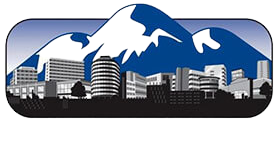About Us
Regional Chamber of Commerce San Gabriel Valley
Welcome the Regional Chamber of Commerce San Gabriel Valley serving the Southeast San Gabriel Valley and home to the communities of Diamond Bar, Walnut, Rowland Heights, Hacienda Heights, Avocado Heights, La Puente, Bassett and Valinda. Nestled in the southeast portion of Los Angeles the region is home to some of the finest residential living, top performing schools, and quintessential rural living in Los Angeles County.
Centered perfectly between the Pacific Ocean and the San Gabriel Mountains you can snow ski in the morning and surf in the afternoon. Then enjoy an evening out and take in some of the best cultural cuisine the area has to offer.
The Regional Chamber of Commerce is your resource to over hundreds of businesses who are here to serve your every need. Just click on “membership directory” and you will find that perfect hotel, restaurant, product, or service.
The Chamber is your Business Resource Center. With just a click, you can tap into the Cities of Diamond Bar, Walnut, and the communities of Rowland Heights, Hacienda Heights, La Puente and Valinda, locate quality schools, higher learning centers, and numerous business assistance organizations.
Why go anywhere else? Live here, bring your business here, or just simply enjoy your visit. There is no place in the world like the Southeast San Gabriel Valley!
What is a Chamber of Commerce?

A chamber of commerce is an organization of businesses seeking to further their collective interests, while advancing their community, region, state or nation. Business owners in towns, cities and other territories voluntarily form these local societies/networks to advocate on behalf of the community at large, economic prosperity and business interests. Chambers have existed in the US for more than two centuries, with many having been established before the jurisdictions they represent. A business-led civic and economic advancement entity operating in a specific space may call itself any number of things – board of trade, business council, etc. – but for the purposes of this primer, they are all chambers of commerce.
Chamber missions vary, but they all tend to focus to some degree on five primary goals: Building communities (regions/states/nations) to which residents, visitors and investors are attracted; Promoting those communities; Striving to ensure future prosperity via a pro-business climate; Representing the unified voice of the employer community; and Reducing transactional friction through well-functioning networks. Chambers have other features in common. Most are led by private-sector employers, self-funded, organized around boards/committees of volunteers and independent. They share a common ambition for sustained prosperity of their community/region, built on thriving employers. Most are ardent proponents of the free market system, resisting attempts to overly burden private sector enterprise and investment.
Local businesses are voluntary paying members of a chamber (non-profits, quasi-public and even public sector employers also sometimes pay dues to belong). The membership, acting collectively, elects a board of directors and/or executive council to set policy for, and guide the workings of, the chamber. The board or executive committee then hires a chief executive (various titles), plus an appropriate and affordable number of staff to run the organization.
In the majority of countries, the use of the term 'chamber of commerce' is regulated by statute, though this is not the case in the US. Only trademark, copyright and domain name rules protect a chamber’s identity – only state corporation law defines their existence and reason for being. While most chambers work closely with government, they are not part of government although many consider the process of appropriately influencing elected/appointed officials to be one of their most important functions.


